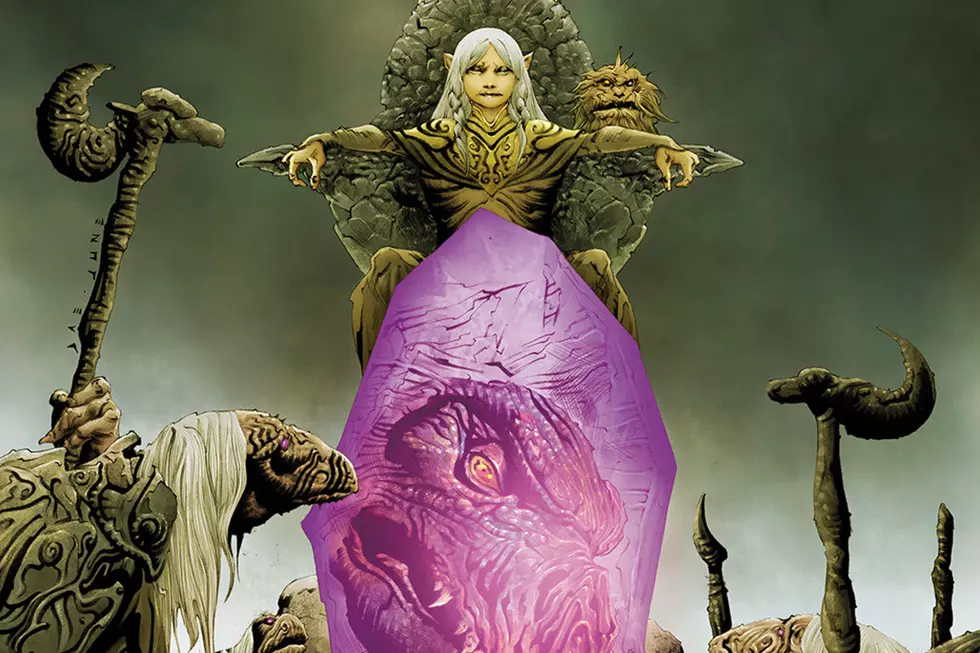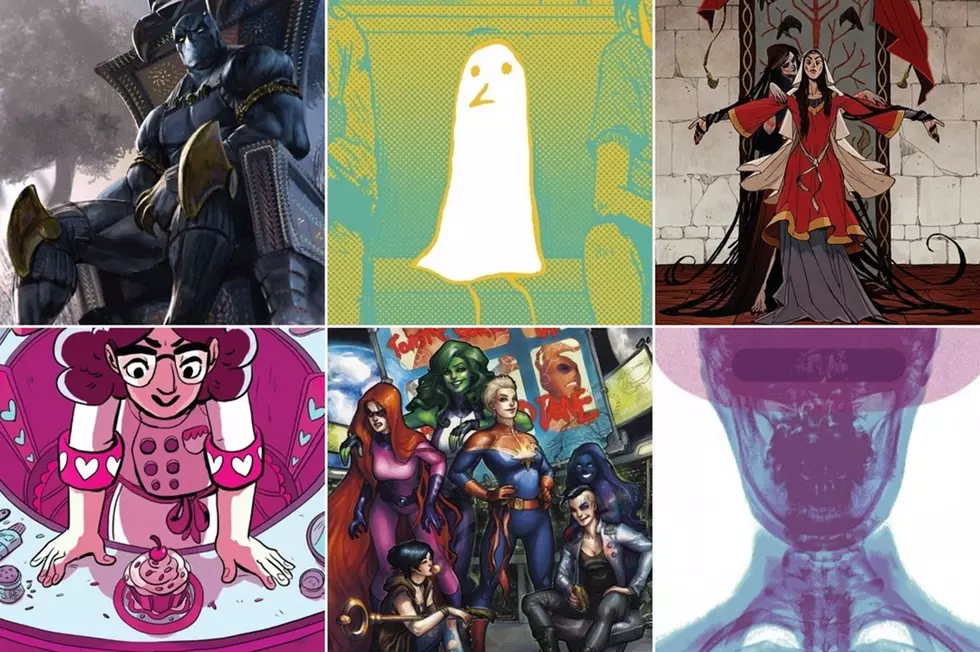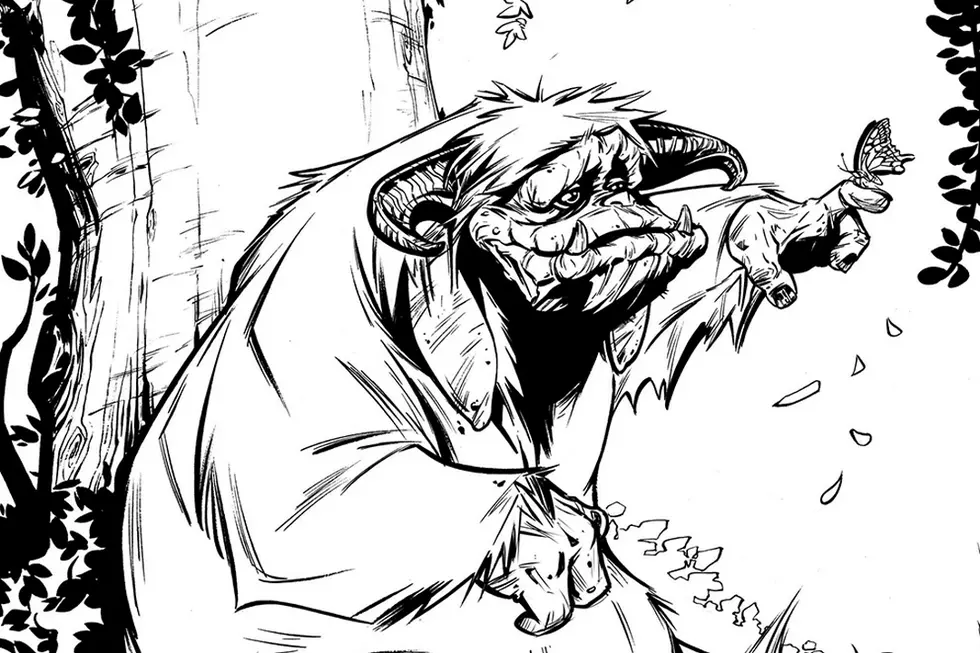
Fatherhood, Facebook, and Finding the Monster: An Interview with ‘The Realist’ Author Asaf Hanuka
Asaf Hanuka is an Israeli illustrator and cartoonist whose award-winning webcomic The Realist began as an account of his adventures in house-hunting, but quickly transformed into a much more ambitious and inspirational exploration of his life as an artist, husband, and father as he tries to make sense of politics, technology, and his daily anxieties. Combining visual flourish, moments of fantasy, and startling use of color, Hanuka is brilliantly effective at putting his inner thoughts and fears on the page.
Archaia has collected Hanuka's strips in English for the first time, including some that have never been collected before. We spoke to Hanuka to find out why he started cataloging his life in this way, how fatherhood and technology have shaped him, and what inspires him to make such effective use of color.
ComicsAlliance: The comics collected in The Realist are very much a diary; what inspired you to document these experiences?
Asaf Hanuka: It was a request from a newspaper editor, Amir Ziv, with whom I have worked in the past, to do a weekly comics page for Calcalist, which is a financial magazine in Israel. It started out as an autobiographical comic about our family's difficulty in finding a place to live in Tel Aviv. After a few months of doing the strip, the financial angle got a bit boring and so I started writing about whatever happened during that week. The editor accepted this change and even encouraged it. I remember once sending a nice story with a cute punchline and he told me the work is more interesting when it's dark and somewhat enigmatic, so I had his full support in doing my thing.
The inspiration for doing autobiographical work came from reading the great work of other cartoonists, starting with Robert Crumb and Art Spiegelman, Joe Matt, Chester Brown, and more recently, Guy Delisle. I worked (and am still working) as a commercial illustrator for 20 years. I'm trained in getting across an abstract idea using an image. For The Realist, I used the same toolbox. The difference is the subject matter I presented is basically how I’m feeling right now.
CA: Does putting your anxieties on the page help you to come to terms with them?
AH: The best way for me to deal with anything is to try to divide it into nine frames and find some sort of narrative logic. Once it's on the page, the monster, which was hiding in the shadows, is smaller because now it's in the light. It helps me get perspective and to understand what's actually happening. Sometimes I finish a page and I'm not even sure what it's about exactly, but I feel relieved. That's how I know it works.
CA: How important were comics as a form of escape for you growing up?
AH: Very important. I feel like I grew up inside a Marvel Comics issue of X-Men from the late ’70s. It was the perfect parallel universe to my normal and balanced childhood. And comics were where I first learned how to draw.
CA: As a reader, are you still able to escape into comics today?
AH: I still read comics when I have a bit of free time. Recently I read L'arabe du Futur (The Arab Future) by Riad Sattouf, which is great. But I don't read it to escape. I came to terms with the fact I will be in this body and mind for the rest of my life. I love comics as a language and I enjoy looking at other cartoonists who develop it and use it in innovative ways.
CA: Fatherhood plays a huge part in this work. How does fatherhood affect you as an artist?
AH: First, I have much less time for work! I used to work all night before, but now that's over. I had to find a way to get the point across in my work faster. I started using less color, dropped the shading, used a thicker line, and stripped the illustration from details that were unnecessary to the story.
On a more personal level, I guess it forced me to realize that what I do isn't that important. When someone needs you to survive, physically, you tend to forget about your own problems. I stopped being so obsessed with myself; I just couldn't. Instead, I made autobiographical comics, which is a pure form of narcissism.
CA: I particularly love the comic, 'Illustration Class' (above), where we see the child inside the man.
AH: I created that page following my experience as a teacher for comics and illustration in Shenkar, a school for graphic design in Tel Aviv. I have been a teacher for the last 13 years, and I enjoy working with the students. In class, I do my best to create a theoretical dialogue regarding critical thinking and methods of work. But when I go back to the drawing board, I become a kid again, and I really enjoy drawing the same way I did when I was five years old. So that gap between discussing illustration on an academic level and actually doing it is always there.
CA: Technology is another major theme in your work. How do you think technology shapes your relationships?
AH: I'm 41, so I got to live in a time when the Internet didn't exist, and no one dreamt of smartphones. I only started working on a computer when I was 25. Like the rest of my generation, I saw the world changing rapidly and had to adjust. I have a close relationship with my cell phone; I'm a victim. But since I know how things used to be 15 years ago, I'm aware of what was lost. I think real intimacy is much harder to achieve when it's being faked by every application on your device and we accept that compromise for the price of getting push notifications
CA: You use color to extraordinary effect. Is there a guiding philosophy to how you color your world?
AH: I believe colors should only serve the story and not be used because they look nice. I often use a limited palette because that's the easiest way to build a hierarchy of importance in an image. Comics are a joint effort of many different tools: lines, words, color, layout, signs, etc. Each should be used carefully in order to tell the story. If words create meaning and lines describe the characters and places, then color is the emotional state of the narrative.
The Realist is available now from Archaia.
More From ComicsAlliance



![Brilliant Art, Tremendous Stories and Daring Creators: The 2016 Eisner Award Winners [SDCC 2016]](http://townsquare.media/site/622/files/2016/07/eisner2016.jpg?w=980&q=75)
![Archaia To Release ‘Mouse Guard Coloring Book’ In October [Exclusive Preview]](http://townsquare.media/site/622/files/2016/04/Mouse-Guard-Featured.png?w=980&q=75)
![Archaia To Release ‘Mouse Guard: Art of Bricks’ Hardcover [Exclusive]](http://townsquare.media/site/622/files/2016/02/Mouse-Guard-Featured.png?w=980&q=75)


![Exclusive: Witches Rule in Scott, Matthews & Matthews’ ‘Toil And Trouble’ #1 [Preview]](http://townsquare.media/site/622/files/2015/08/ToilAndTrouble_feat.jpg?w=980&q=75)
